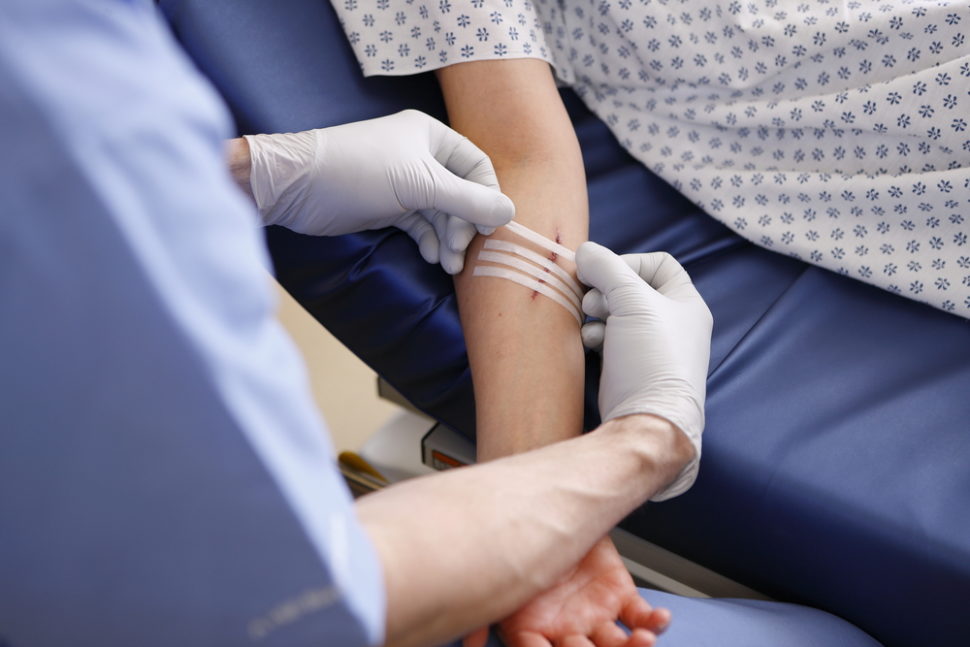In our budding Industry 4.0, we are starting to see conventional materials replaced by newer, more efficient means. Now, gold and silk might replace needles and stitches in treating wounds.
How can you make a wound heal faster?
In Star-Trek, there’s a laser device that wipes off wounds and burns, allowing Capt. Kirk and the Enterprise crew to get back to action immediately.
Science fiction literature describes many advanced wound-healing technologies that instantly fix wounds.
We’re still far from that. We still use the pretty primitive method of a needle and a thread to stitch a wound and let it take its time to heal.
The practice of surgical suture goes back thousands of years.
To accelerate wound healing, we use sutures, which involves bringing the edges of the wound together and then bind them with stitches.
Catgut, fine strings made from sheep intestines; remained for a long time the suture material of choice.
We still suture wounds in a similar fashion today, though we use more adequate needles and threads.
That, besides drugs, is pretty much all we can do to close a wound.
The use of sutures and staples for tissue repair after surgery or injury is a routine procedure in emergency rooms.
What if we could avoid an invasive and distressful surgical suture that can lead to infections and tissue damage altogether?
Soon, this may be possible. Instead of using stitches and tissue adhesives, we could use laser-activated nanomaterials developed at Arizona State University (ASU).
Read More: Portable 3D Skin Printer Created to Help Repair Deep Wounds
Silk and Gold Sealants for Accelerated Tissue Repair
Funded by the National Institute of Biomedical Imaging and Bioengineering (NIBIB), ASU researchers have created innovative wound sealants based on gold nanoparticles as an alternative to sutures and staples.
LANS, or Laser-Activated NanoSealants, “improve on current methods, because they are significantly more biocompatible than sutures or staples. Increased biocompatibility means they are less likely to be seen as a foreign, irritating substance, which reduces the chance of a damaging reaction from the immune system.”
Biocompatibility is a key word here. The team carefully selected and tested sealant materials along with the type of laser used to prevent collateral tissue damage from heat.
The new wound sealants consist of biocompatible silk developed from silkworm cocoons and gold nanorods. Then, a laser heats the sealant applied to an incision, causing the gold nanorods and the silk to “interdigitate” with the surrounding soft tissue proteins to form a firm seal.
Gold nanoparticles quickly cool after their laser activation, a property that minimizes the risk of any heat-induced tissue damage.
The ASU team also went the extra mile and created two LANS types.
The first type is a water-resistant LANS designed for wounds inside the body. This was tested in pig intestines and showed superior performance compared to conventional methods.
Designed for superficial skin wounds, the second LANS forms a paste when in contact with water. Researchers applied this LANS on the skin of a mouse cut to test its efficacy.
Two days later, they found that “the LANS resulted in significantly increased skin strength” compared to both sutures and adhesive glues. In addition, the mouse skin around the healed wound “had fewer neutrophils and cellular debris, which indicate that there was less of an immune reaction to the LANS.”
Arizona State Professor of Chemical Engineering Kaushal Rege and senior author of the study commented on the new tissue repair technology:
“Our results demonstrated that our combination of tissue-integrating nanomaterials, along with the reduced intensity of heat required in this system is a promising technology for eventual use across all fields of medicine and surgery. In addition to fine-tuning the photochemical bonding parameters of the system, we are now testing formulations that will allow for drug loading and release with different medications and with varying timed-release profiles that optimize treatment and healing.”



Comments (0)
Least Recent